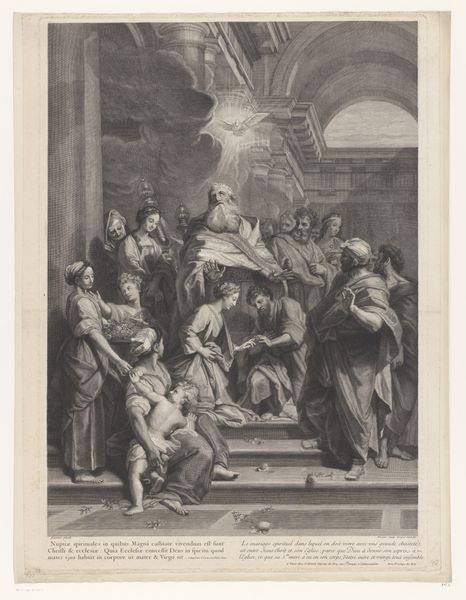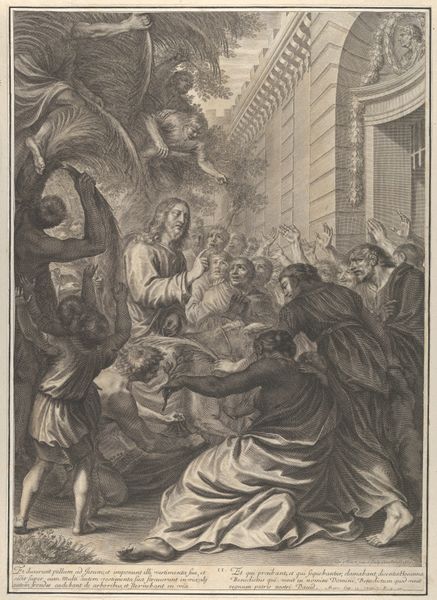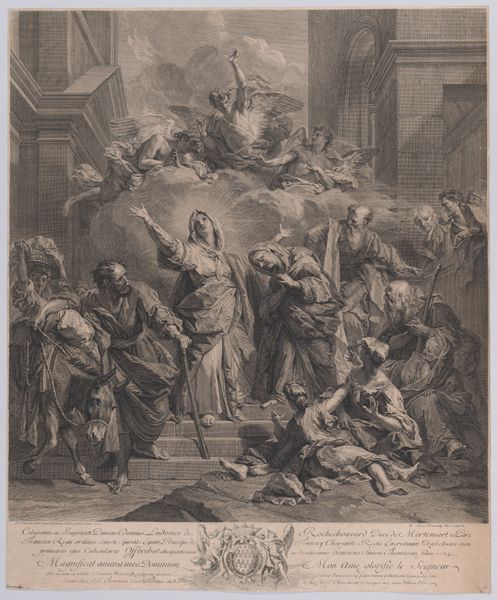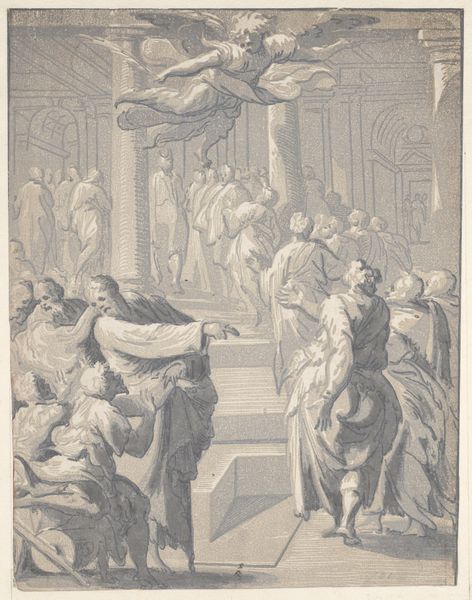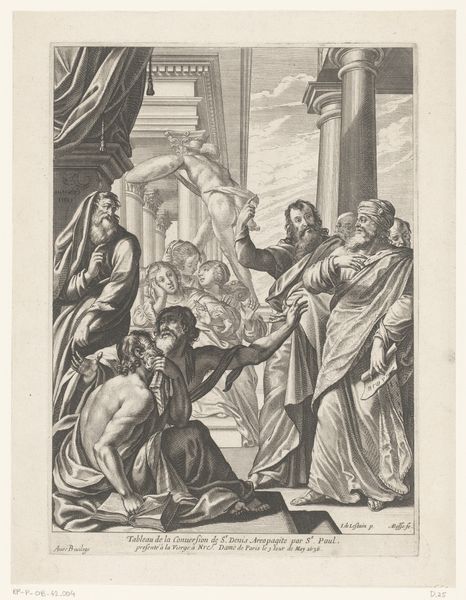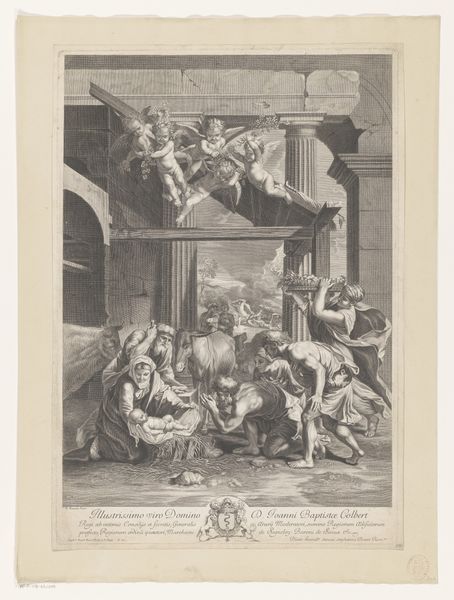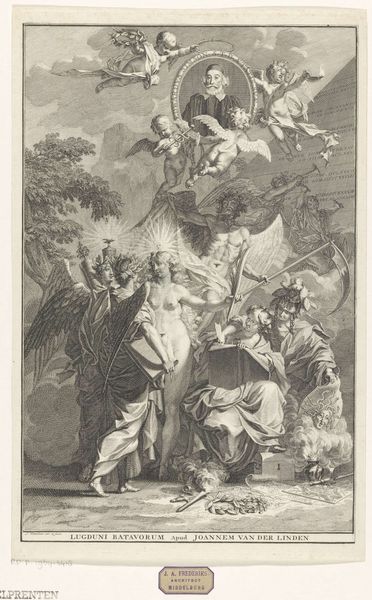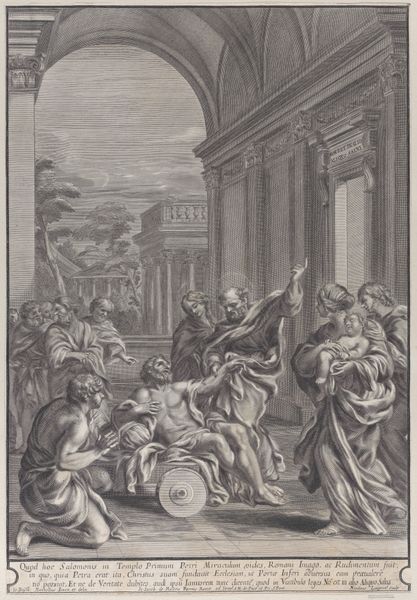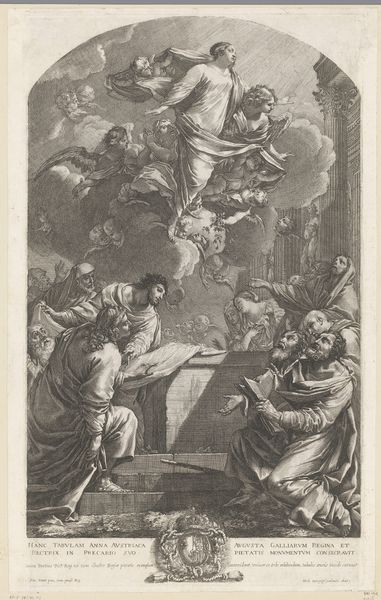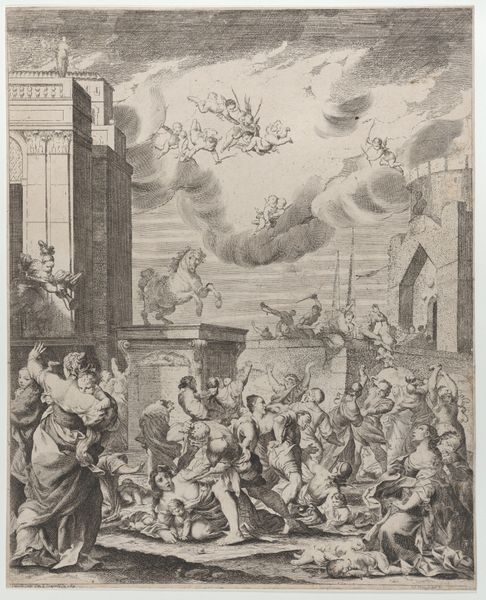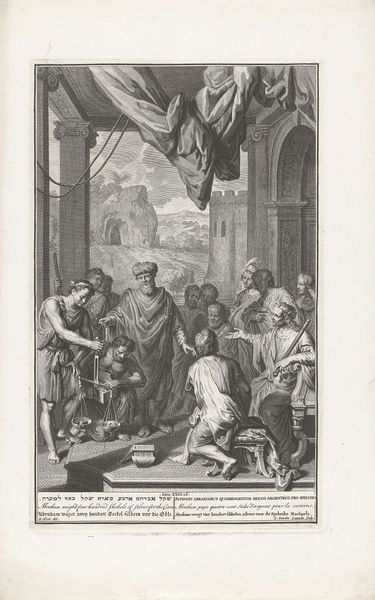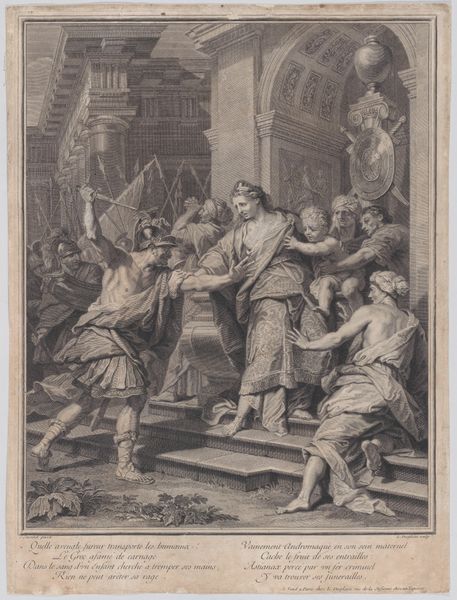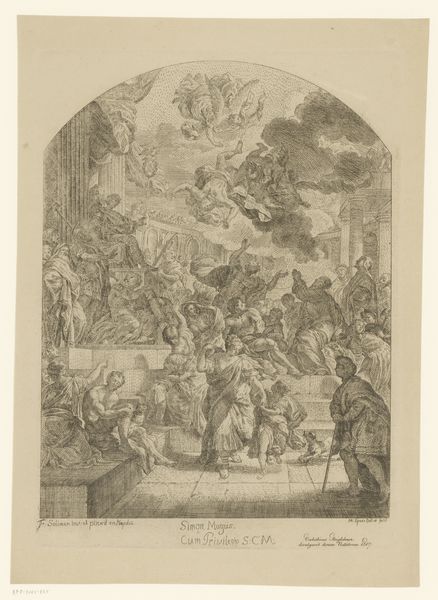
print, engraving
#
baroque
# print
#
figuration
#
history-painting
#
engraving
Dimensions: height 520 mm, width 367 mm
Copyright: Rijks Museum: Open Domain
Curator: This engraving, made around 1638 by Michel Dorigny, depicts The Martyrdom of Saint Eustace. What strikes you first about this piece? Editor: Honestly? Chaos, but a beautifully orchestrated chaos. Figures crammed into every corner, some writhing, others serenely floating. It feels theatrical, dramatic… like a baroque opera frozen in time. Curator: That drama is very much intentional. The Baroque style often aimed to evoke strong emotions and to impress viewers with dynamic scenes. And Eustace's story is inherently dramatic. Editor: What's his story? All I see are these guys clearly not having a good time – ripped from life's cloth with not only suffering, but sacrifice written all over their pallid faces. Is that wild animals attacking him in the front of the work? The central figures certainly exude the suffering so essential in iconic martyrdom depictions throughout art history. Curator: Eustace was a Roman general who converted to Christianity. Legend has it he was martyred with his family, by being roasted alive in a brazen bull. This image appears to capture the moment just before or perhaps during that terrible event. Editor: A brazen bull… Good grief. I can see the device of torture implied above the center characters now. That explains the slightly disconcerted cherubs holding the martyr's wreath over their heads, I guess. How did viewers at the time react to something so gruesome? Curator: Such images were intended to inspire faith, obedience to God, and offer an ideal of Christian virtues to be embraced even if death becomes inevitable. Dorigny frames Eustace's death as triumphant by the gestures of the characters around him and those ethereal ones floating high above. There's a strange comfort amidst the brutality. The politics of religious imagery during this time cannot be underestimated either. Editor: You can sense that tug between horror and hope. There’s a vulnerability, too. Engravings often allowed wider audiences to access powerful imagery, propagating idealogical meaning far and wide through early iterations of mass media, maybe. Even knowing how it ends for Eustace and family, and having to look at his graphic future. Wow, thank you, a lot to reflect on here. Curator: My pleasure, thank you for lending your thoughtful insights and your vision to the past!
Comments
No comments
Be the first to comment and join the conversation on the ultimate creative platform.
